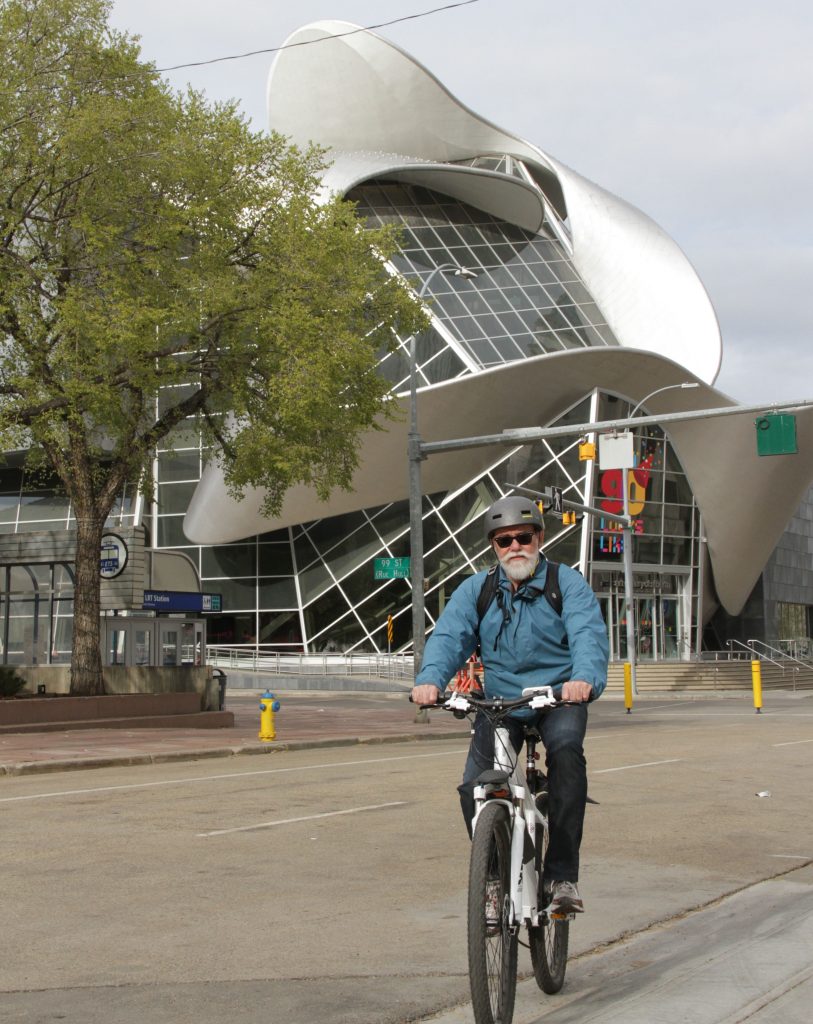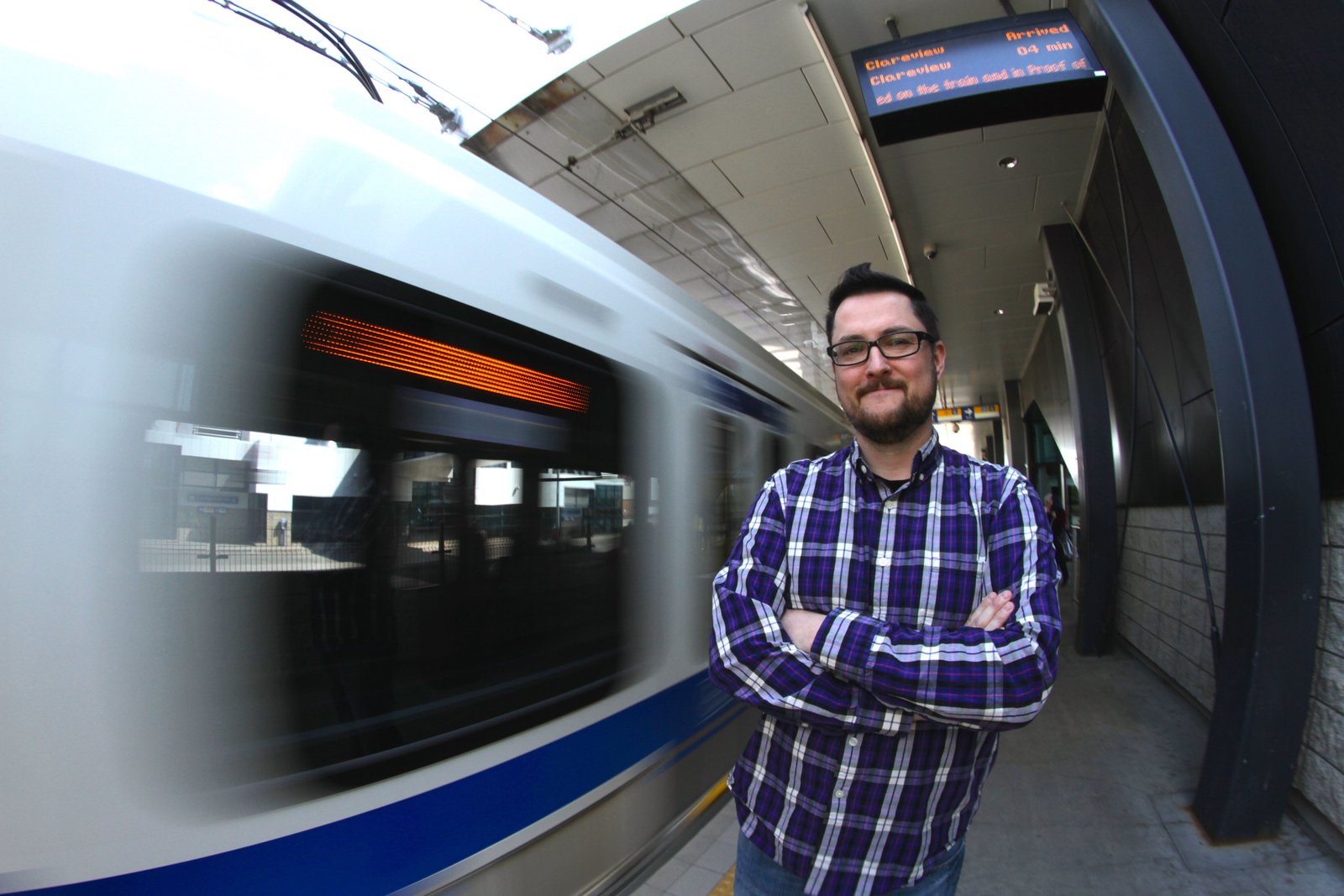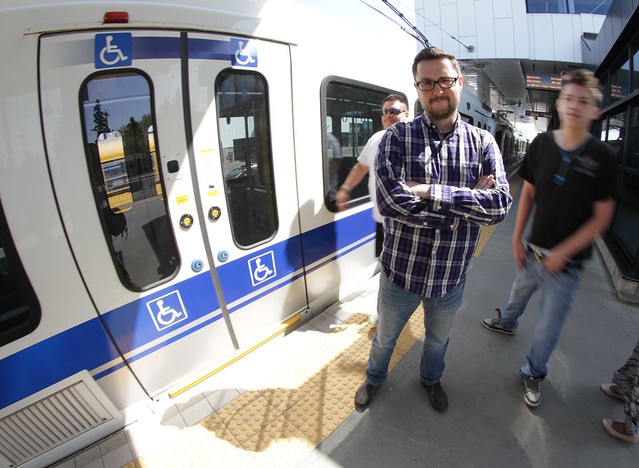By David Dodge and Duncan Kinney
When you buy a house the first thing your eye goes to is the sticker price. But buying a home comes with a major hidden cost that doesn’t show up in the MLS report. Transportation costs could more than eat up the savings of a lower priced home in the suburbs.
The concept is called location efficiency and it’s the amount of time, energy and greenhouse gas emissions you spend getting from where you live to the workplace as well as your other frequent trips. And location efficiency may be the secret sauce to saving money and getting that house in the neighborhood you never thought you could afford.

Location Efficiency expert Kurt Borth says too many people “drive until you qualify” for a big house, without considering the very real and significant transportation costs you will experience just getting to work and play. Photo David Dodge, Green Energy Futures
When you start looking at the examples you can really see the savings. The Pembina Institute and the Royal Bank of Canada put together a report and interactive website called Location Matters that has got some great scenarios. When you click and add the transportation costs you really see what a neighborhood can do for the affordability of a house.
For the average family, transportation is the second-largest household expense; the average annual ownership costs for a late-model Camry comes to $7,500 a year (according to the Canadian Automobile Association).
Kurt Borth is a PhD candidate in the Human Geography and Planning department at the University of Alberta. He’s done a lot of research on this issue and he’s found that the biggest economic impact comes when you scale down from a two-car household to a one-car household. Take that $7,500 a year and after 10 years that’s $75,000 — making that home in the nice walkable neighborhood suddenly seem a lot more affordable.

Click to add transportation costs. The Pembina Institute and the Royal Bank compared location efficiency of various locations in the Toronto region and created this Location Matters Tool Also see their Location Matters Report.
Health effects
Location efficiency doesn’t mean suburbs are bad and downtown is good. It means that if you live close to where you work, play and shop you will save money, time and maybe most importantly your health.
It turns out reducing your commute can make you a happier, healthier person.
“When you talk about sprawl or these non-efficient locations a lot of bad things come up. So there is increased diabetes rates, increased obesity rates, heart disease. There is even a study out of Sweden that says that divorce rates are higher in these neighborhoods,” says Borth.
Non-location-efficient development leads to poor air quality, physical inactivity, higher chances of getting in a car accident and mental health impacts.
And just anecdotally this makes sense. Who among us hasn’t been stressed after a longer-than-average drive back from work due to a car accident or road construction?
City building

Councillor Scott McKeen lived a suburban lifestyle for part of his life and then moved to the city’s core: “So, we’re talking about a location efficiency, but there’s so much more to this lifestyle that I think we have to talk to people about. You’re going save money, you’re going be easier on the planet, and you might make more friends than you’ve ever had before in your life.” Photo David Dodge, GreenEnergyFutures.ca
And when you scale up the idea of location efficiency to the neighborhood level that’s when cities get involved. Cities like Edmonton are losing money on the new neighborhoods that they are building on the edge of town. The cost to maintain roads as well as services like transit, fire and police, parks and playgrounds and libraries is well over what these neighborhoods bring in via property taxes.
Cities are realizing this and moving to address it. Scott McKeen is a city councillor in Edmonton and he’s seen how these new suburban neighborhoods can become more location efficient. Online pharmacy provides privacy or even anonymity. The buyer may feel more comfortable when purchasing the drug or in consultation using e-mail, video ¬ communication or other services provided by Online pharmacy. In addition, the use of such services is very convenient for people with disabilities or living away from pharmacies, or having a busy work schedule. Many Online pharmacy also offer their customers a notification service on the need for regular use of the drug, which contributes to compliance with the treatment regimen.
“If we’re going to build this new neighbourhood, and it’s way out there, let’s design it so the people that move there can walk to a grocery store, can walk to a transit stop, can walk to a theatre, and they don’t have to leave their community, necessarily, to have those urban experiences,” says McKeen.
McKeen himself started in the suburbs, “But what we did do when they were still teenagers, was move downtown and live in a loft, just as a kind of an experiment. It lasted two years. I loved it. The kids loved it. They all live in the core now, and they all take transit, and they ride bikes, or they take cabs or they take Uber.”
The evidence supports McKeen’s experience. Research shows that kids are getting fewer driver’s licenses and not buying as many cars.
For McKeen, a councillor for a centrally located ward, it’s about lifestyle: “So, we’re talking about a location efficiency, but there’s so much more to this lifestyle than I think we have to talk to people about. You’re going to save money, you’re going to be easier on the planet, and you might make more friends than you’ve ever had before in your life.”
“It’s not urban or suburban, it’s location efficiency. And I actually really like that term,” says McKeen. “Part of it is, living close to where you work, so you don’t have to do a long commute, and having a neighbourhood designed so you don’t have to have two cars, because dad’s taking the kids to soccer and mom wants to go to her Pilates class. Well, hopefully she could walk to her Pilates class.”
After a 50-year run of car-centric urban design, there are signs that the pendulum has started to swing the other way. Younger people are driving less, suburbs are getting denser and even big lending institutions like Fannie Mae in the U.S. are realizing that people in location efficient neighborhoods are less likely to default on their mortgages.


